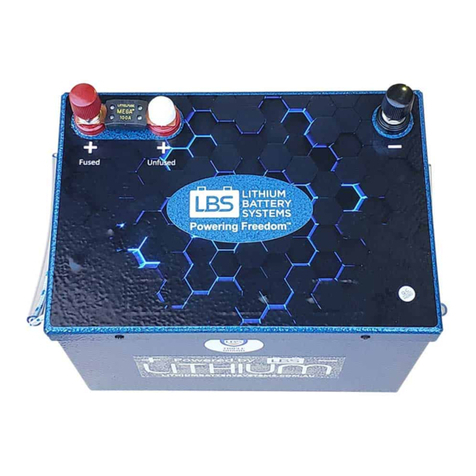
MED HP Batteries –Installation & User Guide
Installation & User Guide
HP Batteries; Medium Size
Contents
1.0 Acronyms & Abbreviations..................................................................................................................................3
2.0 Introduction .................................................................................................................................................................4
3.0 Do’s and Don’ts ...........................................................................................................................................................5
2.1 Ensure the battery is physically secure.................................................................................................................5
2.2 Do not penetrate the battery enclosure ................................................................................................................5
2.3 Maintain an acceptable temperature range.........................................................................................................5
2.4 Avoid repeated shock and vibration.......................................................................................................................6
2.5 Avoid exposure to water or salt spray ...................................................................................................................6
2.6 Do not short circuit the battery.................................................................................................................................6
2.7 Mounting orientation ....................................................................................................................................................6
4.0 Longevity & Depth of Discharge........................................................................................................................7
4.1 Discharge Curve...............................................................................................................................................................7
5.0 Installation....................................................................................................................................................................9
5.1 Securing the Battery ......................................................................................................................................................9
Mounting orientation.......................................................................................................................................................9
5.2 Connecting the battery ..............................................................................................................................................10
Batteries OFF ....................................................................................................................................................................11
Connect Wiring ................................................................................................................................................................ 11
Connect Isolators/Breakers .......................................................................................................................................11
Batteries ON...................................................................................................................................................................... 11
Loads ON.............................................................................................................................................................................12
5.3 Anderson Plugs –BIC Version Only......................................................................................................................12
5.4 Voltmeters.......................................................................................................................................................................13
6.0 Battery User Guide.................................................................................................................................................14
6.1 Battery Management System ..................................................................................................................................14
6.2 BMS User Interface......................................................................................................................................................14
STATUS LED...................................................................................................................................................................... 15
Low Voltage Disconnect...............................................................................................................................................16
Short Circuit & Surge Overload.................................................................................................................................17
Comms reset:.........................................................................................................................................................................17




























